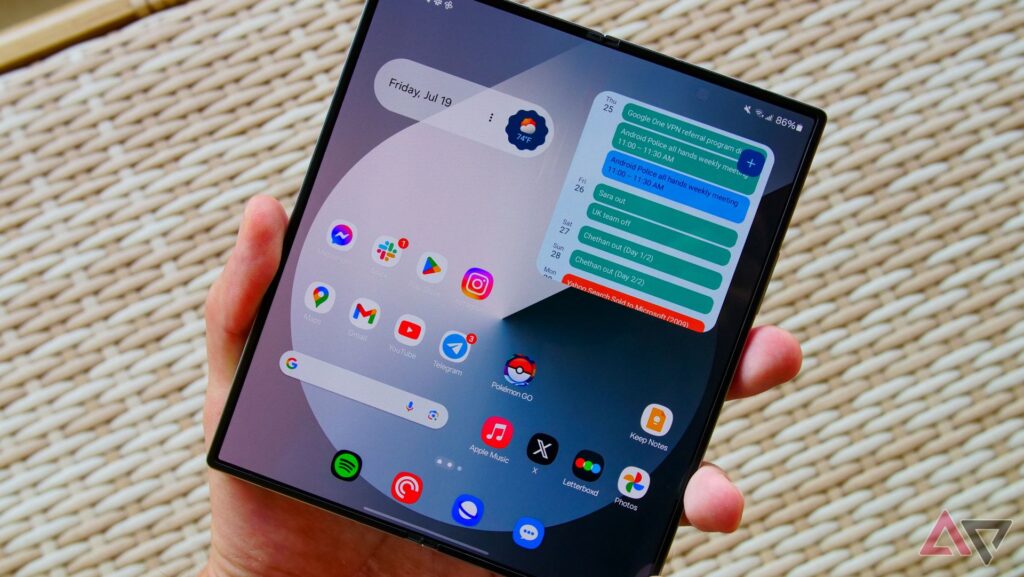
Samsung’s recent tease of the Galaxy Fold Ultra has sparked a mix of excitement and skepticism in the tech community. The company hinted at a new foldable device featuring a larger display and an enhanced camera system. While Samsung’s Galaxy Z Fold series has seen several iterations, these particular upgrades have left some industry observers questioning the company’s strategic direction.
The announcement comes as Samsung continues to face criticism from enthusiasts who feel that despite paying a premium over traditional flagship phones, they receive “inferior” camera specs and smaller displays compared to some overseas foldables. However, the real challenge for Samsung may not lie in these areas.
Samsung’s Focus: Right or Wrong?
Many users, including myself, are puzzled by Samsung’s decision to prioritize a larger display and better cameras for the Galaxy Fold Ultra. While expansive internal displays on some overseas foldables are indeed impressive, they don’t necessarily enhance the user experience for everyone. Personally, I find the extra space on my Galaxy Z Fold 6 underutilized, often leading to frustration rather than satisfaction.
The external display experience on the Galaxy Z Fold 6 pales in comparison to the Galaxy S25 Ultra, and the internal display’s aspect ratio results in black bars that diminish the viewing area. Despite improvements in durability over recent generations, foldables still pose challenges, such as hesitancy to bring them to environments like the beach.
Moreover, while the camera system on the Galaxy Z Fold 6 may not match other Samsung flagships in versatility, it consistently delivers crisp, vibrant images. The prospect of a larger sensor or a telescoping lens intrigues me, but I worry about the potential price increase.
The Real Barriers to Foldable Adoption
Clamshell foldables, such as the Motorola Razr, offer a more practical and affordable alternative, with a higher likelihood of mainstream adoption. The simplicity of using a clamshell device mirrors that of traditional phones, reducing the learning curve for users. In contrast, book-style foldables require a shift in mindset, which, coupled with their high price, can deter potential buyers.
Even if Samsung manages to keep the Galaxy Fold Ultra’s price around $2,000, it remains a significant investment. The need for foldables to become more affordable is evident, yet Samsung’s trajectory with the Galaxy Z Flip and Fold series suggests otherwise. Price aside, the lack of compelling reasons beyond display and camera enhancements may explain why large folding phones haven’t gained traction.
Understanding the Premium
For foldables to justify their premium, they must offer more than just hardware improvements. Software innovations could play a crucial role in enhancing the foldable experience. Samsung needs to develop a distinct version of One UI for folding phones and tablets. Although Android 12L showed promise, significant advancements have been lacking in recent years.
Furthermore, apps that fully utilize the additional screen real estate could entice users to embrace foldables. A custom experience for power users, with features like improved multitasking or a better UI for editing photos and videos, could make the premium feel worthwhile.
The Future of Foldables: Clamshells or Trifolds?
Despite my love for technology and the thrill of testing new foldables, clamshell devices like the Motorola Razr currently hold my attention. Samsung’s rumored trifolding phone might have a better chance of gaining traction, even though it will likely come with a hefty price tag. A 16:9 aspect ratio offers app developers more options, showcasing the Snapdragon 8 Elite’s capabilities.
Until such innovations materialize, consumers may have to settle for devices like the Galaxy Fold Ultra. At the very least, they can expect improved photography capabilities, though the broader appeal of foldables remains in question.
As Samsung navigates the evolving landscape of foldable technology, the company must balance hardware advancements with software innovation to truly capture the market’s interest. Only then can foldables transition from niche products to mainstream devices.





